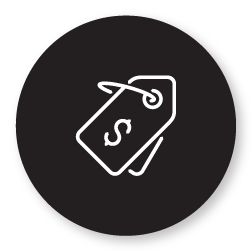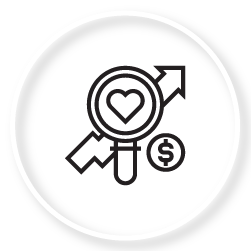In an economic system, there are a few recognised variables that influence demand and consumption. Practically speaking, you should never ignore the equilibrium of demand and consumption. That's because by accurately forecasting what your customers want, you can make accurate decisions. So that begs the question - what demand determinants influence your forecasting efforts?
In this article, we’ll investigate a handful of them, including pricing, living standard measures, the cost of complementary products, consumer expectations and market demand.
It is worth pointing out that these are not the only factors that can influence your forecasting decisions - the factors that influence demand is a never-ending list. However, these determinants are a good starting point for any retailer.
About the contributors
Kelly Cordeiro joined DotActiv in 2017. Since joining, she has had experience running many accounts, including ACDC, Ultra Liquors, Diageo, JDE Coffee, GSK, Shield, Permoseal and Pick n Pay.
Suné Oosthuizen joined DotActiv in late 2019 as a space planner. She currently works as a category planner on the Dis-Chem account in Johannesburg. She has a BConsumer Science Honours degree in Clothing Retail Management.
Yolandé Beumer joined DotActiv in May 2019 as a retail space planner for Edible Groceries at Pick n Pay before moving to Dis-Chem. In 2021, she was promoted to account manager where she will look after various ad-hoc accounts. She has a BSc in Consumer Science with Business Management from the North-West University and recently graduated with her Masters.

How does pricing influence your forecasting decisions?
Pricing is the first determinant and with good reason. You'll find that many of your customers use the price of a product as a parameter in their purchase decision when all other factors remain constant.
It's also vital to note that the relationship between pricing and demand is an elastic and indirect one. By that, we mean that if the price of a product increases, you can expect demand to decrease. Similarly, when you reduce the price of goods, you can increase demand.
When the quantity demanded fluctuates with price changes, it is known as elastic demand. On the other hand, if a change in price doesn’t significantly influence the demand, it is known as inelastic demand.
For instance, if you increase the price of bagels, your consumers would potentially buy fewer or smaller quantities of bagels. This inevitably leads to a decrease in demand for bagels. However, if the price per bagel drastically decreases, your consumer demand can and will most likely increase drastically as they have the opportunity to buy larger quantities for a lower price.
You can exchange any product here and you'll likely see a similar result.
On the other hand, an example of inelastic demand would be a change in petrol. Regardless of the price change, consumers with cars still need to buy petrol to travel.
Ignoring these price changes in the market can result in you not being prepared for higher demand. It could also lead to you sitting with large quantities of excess stock when consumer demand decreases.

How does the LSM of customers influence your forecasting decisions?
A second key determinant of demand is the Living Standard Measure of your consumers or, in this case, their evident income. Generally, the higher a person’s aggregated income, the higher their standard of living and demand for a certain commodity.
A consumer group’s LSM essentially forces you to tailor your product offerings to satisfy the group’s specific needs. This is where localised assortment planning can help you. By tailoring your product assortment to your target market, you can always ensure to have the right amount of products at the right time and at the right price to meet demand.
For example, if your target market is a lower LSM, they will more than likely seldom buy luxury products, instead spending their income on inferior goods. For context, inferior goods are products like milk, bread or rice. There would be little to no demand for luxury items.
However, let's switch that around and say that you do cater to an LSM that demands expensive products. Since customers in a high LSM group are more flexible with their income, the demand for luxury and inferior goods both increase.
Another aspect to consider here, and one that can further influence your forecasting efforts is an income increase for a customer group. That increase can and will lead to a higher demand for certain products, many of which could fall into the luxury category.
It's thus critical that you monitor any economic changes that could influence your target market and their purchasing decisions. If you don't, you could quite easily miss opportunities to offer products that your customers want when or if they start earning more money and demand different products.

How does the cost of complementary products influence your forecasting decisions?
Complementary products are those items that you can often use together. Technically, a complementary product is also a product whose appeal increases with the increase in popularity of its complementary product.
A good example here is a tennis racket and tennis balls. If your customers purchase a tennis racket, they'll buy tennis balls as well. They might also purchase additional strings or other accessories that complement their initial purchase.
In terms of this influencing decisions, we can point out that the price of one can influence the demand of the other. You do need to take that into account so that you can adjust any order quantities for both products. These adjustments would suit the price and demand of your primary product. In this case, it's your tennis racket.
For example, should the price of tennis rackets increase, the demand for tennis balls will decrease. Thus, you should prepare for lower sales for both your tennis rackets and balls. However, should the price of tennis rackets decrease, the demand thereof will increase, as well as that of the tennis balls.
Ignoring this impact will cause you to be unprepared for any increase or decrease in demand for both products. There could potentially lead to a double overflow of stock if demand is lower and also too little stock if the demand increases.

How do consumer expectations influence your forecasting decisions?
Collectively, individual preferences and expectations can and do shape the market.
If we consider consumer expectations as a demand determinant, it can include various aspects. It includes their expectation of a value increase or decrease, an expected quality of brand based on previous purchases or even an increase or decrease in their future personal income.
There is also the point that a potential increase in future prices could cause an instant increase in the demand for the product before the price increases. Yet, should there be a potential decrease in the future price of a product, you should prepare for an increase in the consumer demand thereof.
An example of this is the COVID-19 pandemic. In 2020, after Covid-19 was declared a pandemic by the World Health Organisation, consumers across the world rushed to stores to stock up on specific items. They knew prices could change and retailers could run out of stock before they made their purchases. Less availability of these items would drive up the prices.
We could also use a price increase in petrol here as an example as well. When consumers hear that there is a potential price increase in the future, they tend to rush to the closest gas station to fill up their tanks. How many times have you been to the petrol station on the night before the price increase only to be met with a long line of cars and the knowledge that if you want to fill up, you'll be waiting a while?
You must take consumer expectations into account to keep yourself aware of any changes in the market so that you are prepared for any sudden influx or decrease in demands.

How does market demand influence your forecasting decisions?
The last demand determinant that we want to focus on is the market demand. Here, it is the number of buyers in the market that influences the aggregate demand.
In short, the more active buyers there are, the higher the demand for a certain product will be. Large aggregations of consumers would cause an influx of demand, whereas a recession would cause any demand to drastically decrease.
You could apply this to any product or situation that sees a dramatic increase in demand before buyers realise that it's either overpriced or not worth buying.
Likewise, it could relate to any unforeseen scenario. Let’s go back to Covid-19 as an example and its influence on remote work. Before the pandemic, remote work wasn’t as widely accepted.
However, once the pandemic began and as it became increasingly likely that it was going to last for longer than expected, many people all over the world looked to set up home offices. This eventually drove up the demand for office furniture and the internet. The demand for these items will spike to such a level that if you sold any related items, you could face an out of stock status within days.
Understanding the broader market in which your business operates is crucial for your demand planning and forecasting efforts and essential for the success of your business.
Conclusion
Demand forecasts based solely on quantitative data are not always reliable. You should combine your quantitative forecasts with qualitative data as well. Understanding the determinants evaluated in this article is imperative to managing the supply for any potential demand.
Looking for advice or need a category management solution that can help your forecasting efforts? Visit our online store here for more information or book a custom exploratory consultation.


